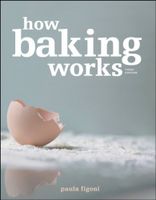Label
All
0
Clear all filters
Questions for Discussion
Appears in
By Paula Figoni
Published 2003
- Since high-ratio liquid shortening cakes are made with cake flour that contains very little gluten, how is it that the amount of fat and sugar in liquid shortening cakes can have a large effect on the tenderness of these cakes?
- Explain why developing the maximum amount of gluten is not necessarily desirable in bread baking.
- Explain why developing the minimum amount of gluten is not necessarily desirable with pastries.
- Why is the careful selection of flour more important with breads than with muffins?
- You are making a laminated dough, such as a croissant or puff pastry dough, with two bread flours to choose from: one with a high alveograph P/L ratio, the other with a low ratio. Which flour should you use? Explain.
- A baker moves from New York (where water is very soft) to Texas (where water is very hard). How might changes be made to the type of flour, the amount of water, and the amount of mixing, so that the bagels made in Texas have the same texture as those made in New York?
- Explain why the use of cake flour and of a high amount of water and tenderizers in high-ratio liquid shortening cakes practically eliminates any concern over gluten development.
- A brioche dough rose beautifully only to collapse during the early stages of baking. What changes might be needed in the method of preparation? Consider changes that might be needed in mixing, fermentation, pretreating milk, and so forth. Note: brioche is made from a sweet, rich dough that generally contains eggs, butter, sugar, and fluid milk (as well as bread flour, yeast, and salt).
Advertisement
Advertisement
The licensor does not allow printing of this title


